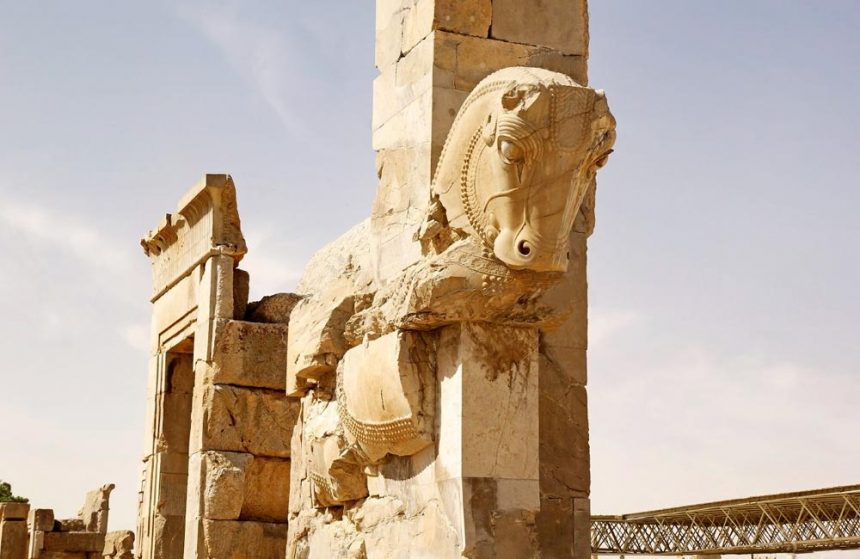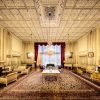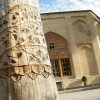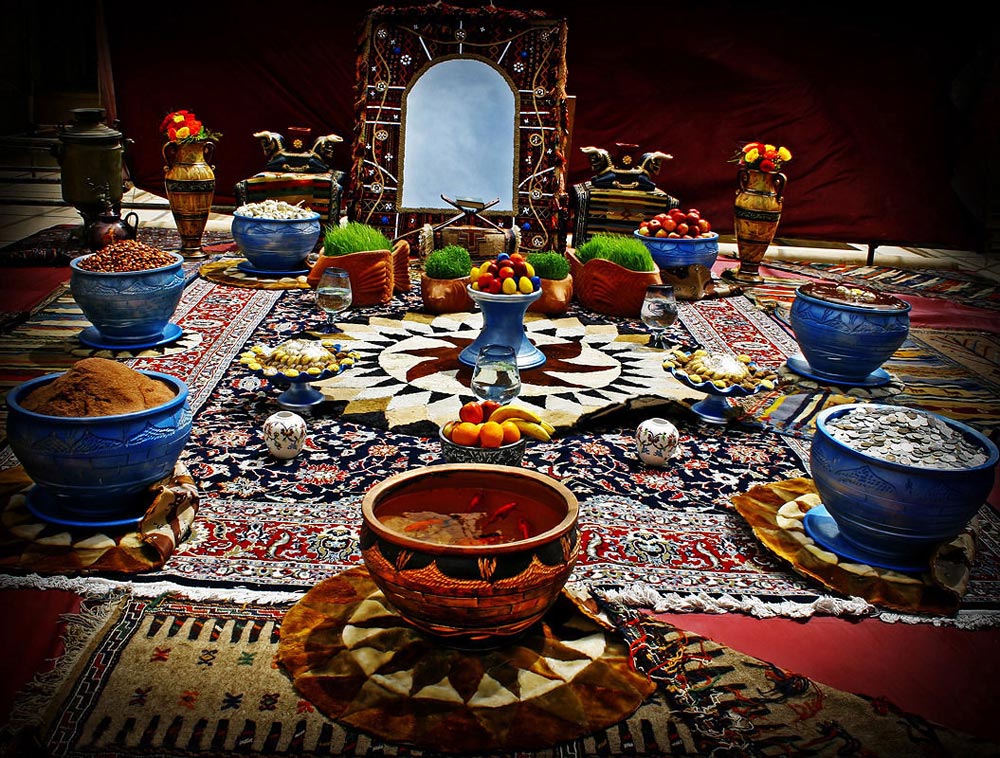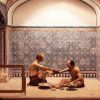The mighty metropolis of Persepolis, an enormous archive of ancient Persian texts, bas-relief carvings, palaces, halls and tombs of the antiquated empire’s royalty, and the ceremonial capital and seat of the great Achaemenid Empire.
For over two centuries the ancient Persian Empire ruled from the archeological marvel. The earliest remains, however, were discovered to be from as early as 515 BC! Andre Godard, a French archeologist, speculated that it was Cyrus the II who chose the site, but Darius the Great, who built it.
The world renowned symbol of the ancient Persian Empire has been an official UNESCO World Heritage Site since 1979. Come along with goingIRAN to learn and discover more about this destination!
A Peek at the Persian City’s History
It is among the world’s greatest archaeological sites of no equivalence. Carved on the southern face of its terrace, ancient engravings reveal that, Darius I the Great, first founded this monumental city in 518 BC.
It came to be through his intent of creating a seat for government and a luxurious center for celebrations and receptions.
As a result, the Achaemenid Empire did, indeed, sit and rule in this awe-inspiring complex that is now a critical piece of explaining ancient history.
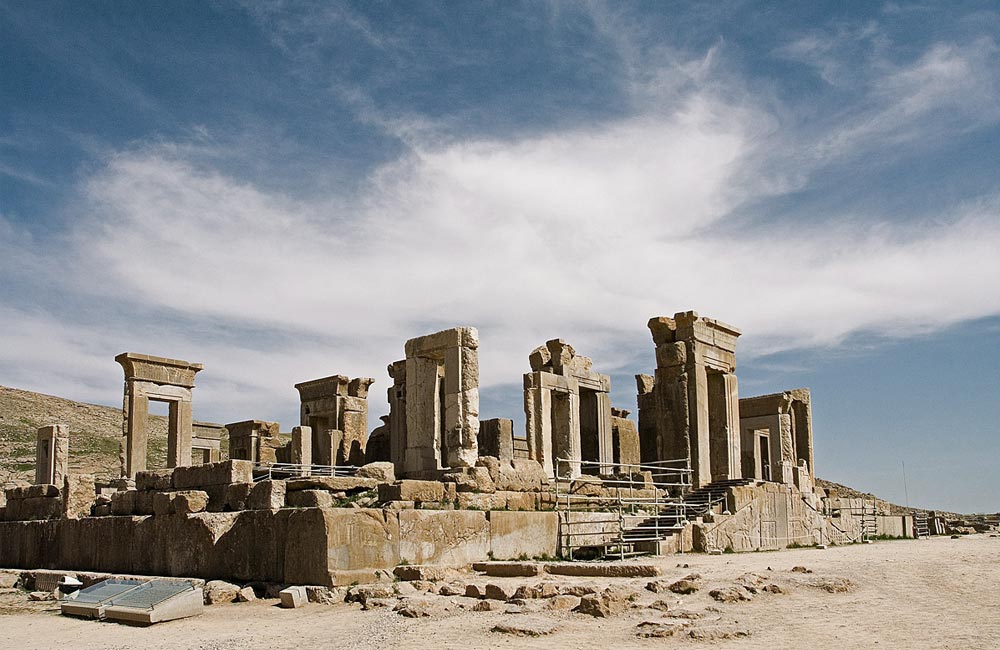
All this enormity of greatness and beauty eventually did come to a grueling halt. In the year 330 BC, the Greek warriors of Alexander the Great raided and destroyed the ancient capital by savagely burning it to the ground.
According to Greek history, the enormous treasures taken from the royal city was carried away on 20,000 mules and 5,000 camels. This is why all that remains today are just the bare stones of the magnificent structures that once stood, giving us a glimpse of at just a frame of what was one of the most illustrious cities of the worlds’ civilizations.
Famous Symbols of Persepolis
The palace featured of a grand hall spanning 3600 square meters with 72 stone columns holding up the ceiling. The top of each column was a carved-stone symbolic animal sculpture; such as two-headed bulls, lions and eagles.
To this day, after passed millennia, 13 of those columns still stand! At the south of the hall, a series of storage rooms were constructed. In the north, west and east of the hall there were porticos (entrance gates) followed by twelve columns, six on each side.
All walls were magnificently decorated and tiled with intricate symbolic depictions of lions, bulls and flowers. On the external fronts of the palace, many carvings of the Great Immortals (elite guards of the kings) encompassed the entire area.
After Apadana, the largest building in Persepolis is the Throne Hall. It is also known as Imperial Army’s Hall of Honour or Hundred-Column Palace. Its massive stone doorways are elaborately decorated with ancient reliefs depicting throne scenes as well as scenes of the king in combat with mysterious monsters.
Used in the beginning of Xerxes’ reign, it was mainly a reception hall for military commanders and representatives of all the nations under the rule of the great empire.
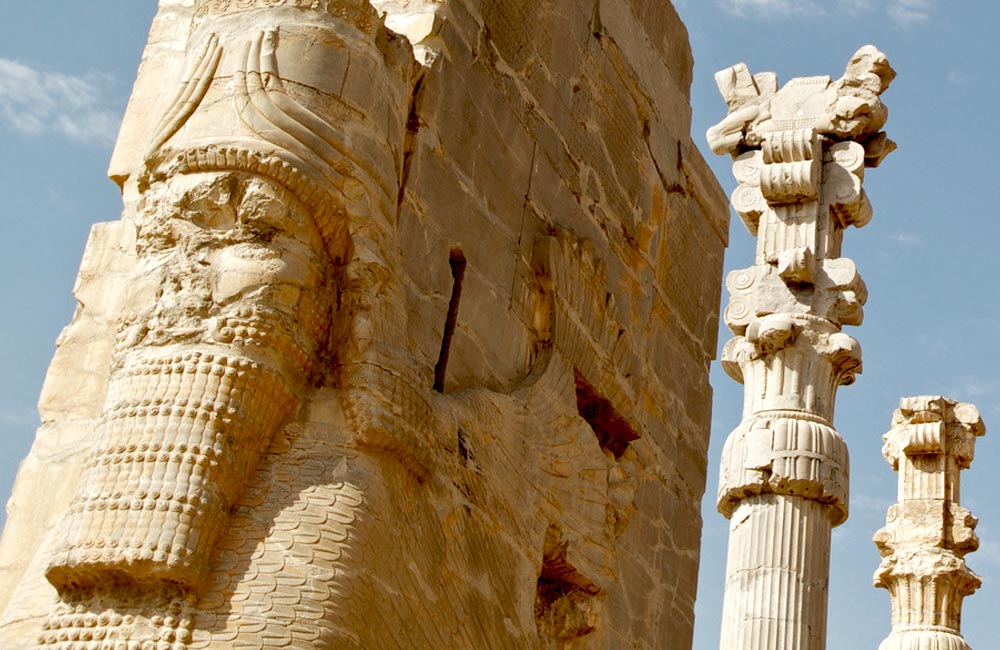
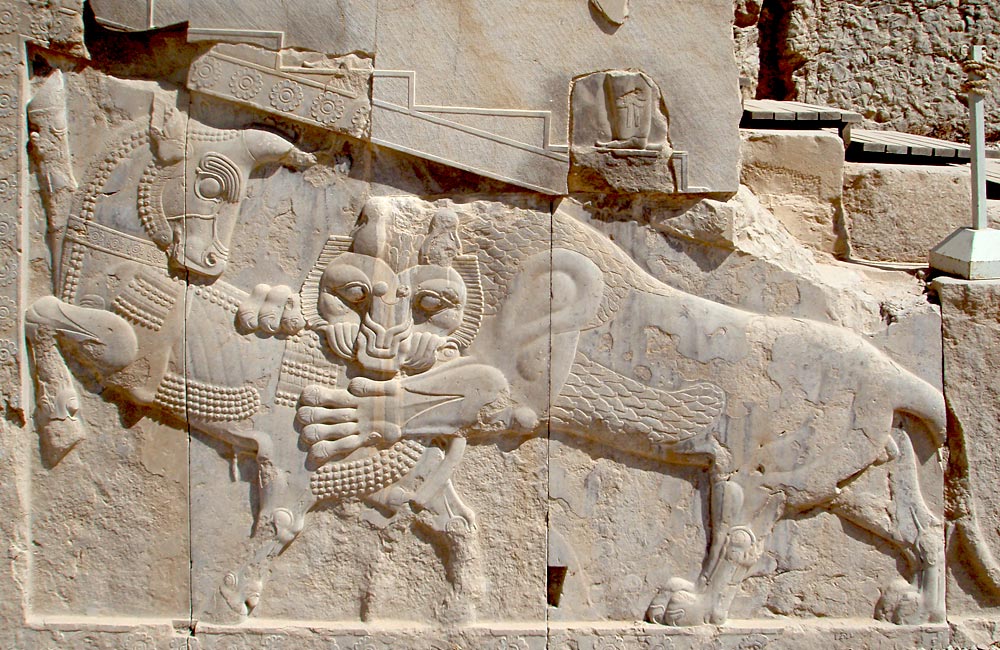
The Vastness of The Ancient City Persepolis (Takht-e Jamshid)
Rooted in the foothills of Kuh-e Rahmat (Mercy Mountain) in Shiraz, the monumental double-flight stairways lead up to a grand 125,000 square meter terrace; a terrace, where the walls are covered in a plethora of intricate friezes and bas-relief carvings.
Gigantic authoritarian stone winged-bulls stand tall, protecting the magnificent halls and palaces of the royal complex.
Upon entering from the western wall of the terrace, visitors will witness the “Gate of All Nations”. The great entranceway, which is comprised of a pair of giant Lamassus (bulls with heads of bearded men).
Reflecting the empires mighty strength, a brothering pair also stands at the eastern entrance with wings and heads of Persians.

On the western wing of this same terrace is the greatest palace at Persepolis, Apadana. The king of kings, Darius I, strictly used it for meeting with official audiences.
There are is a plethora of more palaces and structures in the antiquated Persepolis complex. Tachara Palace, Imperial Treasury, Hadish Palace, Council Hall, the Tryplion Hall, stables and many other miscellaneous structures to name a few.
Treading among these ancient remains only fills travelers with even more wonder and amazement than what they arrived with.
Many aspects of Persepolis’s mysterious antiquated remains reveal ancient truths about Iran’s culture and history. They encourage visitors to study the true history of its existence in further depth, even once they leave Iran.
In their travel to Iran, this destination is definitely not missed by anyone! Despite being in ruins, this ancient world marvel is definitely one of the most beautiful places in Iran and the world!
Recommended Reads | Pasargadae Ancient City
Recommended Reads | Naghsh-e Rostam
City/Town: Marvdasht – Shiraz
Address: Persepolis Area, Shiraz Persepolis Roadway, Marvdasht City
Neighborhood: Apadana Palace – Tomb of Artaxerxes II – Naqsh-e Rostam – Naqsh-e Rajab – Stakhr Historic city – Apadana Hotel
Operating Days: Everyday
Operating Hours: 8 Am. to 6 Pm.


